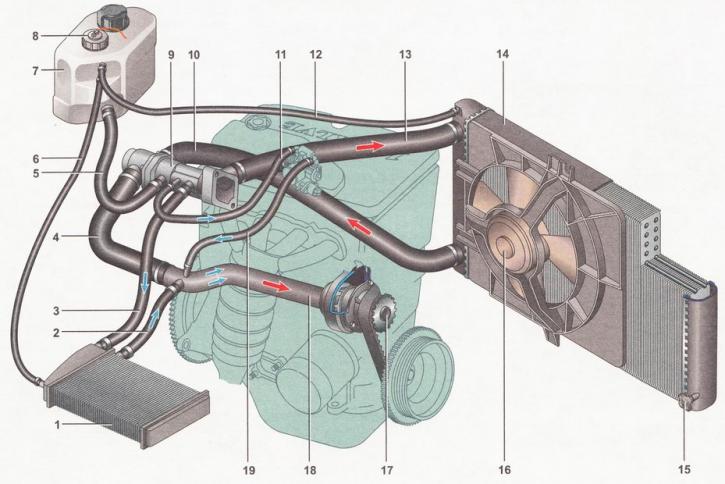In this case, the coolant will circulate in a small circle. This can be determined by touch - the lower radiator pipe and the radiator itself should be noticeably colder than the thermostat housing, through which hot coolant circulates.
When the coolant temperature reaches 85°C, the main thermostat valve begins to open and a gradually increasing flow of hot liquid enters the radiator.
In this case, first the radiator itself, and then the lower radiator pipe will begin to heat up.
At 102°C, the main thermostat valve is fully open and most of the coolant flows through the radiator. In this case, the radiator should be hot in the upper zone and slightly colder in the lower zone.

Engine cooling system: 1 - heater radiator; 2 - hose for draining coolant from the heater radiator; 3 - hose for supplying coolant to the heater radiator; 4 - coolant pump hose; 5 - expansion tank hose; 6 - steam outlet hose of the heater radiator; 7 - expansion tank; 8 - liquid level sensor in the expansion tank *; 9 - thermostat; 10 - hose for draining coolant from the engine radiator; 11— fluid supply hose to the throttle assembly; 12 - steam outlet hose of the engine radiator; 13 - hose for supplying fluid to the engine radiator; 14 - engine radiator; 15 - radiator drain plug; 16 - electric fan of the engine radiator; 17 - coolant pump; 18 - supply pipe to the coolant pump; 19 - coolant outlet hose from the throttle assembly
* Installed on car parts.
